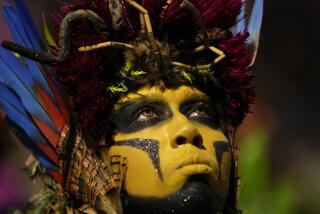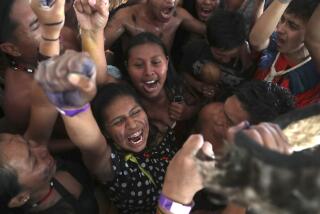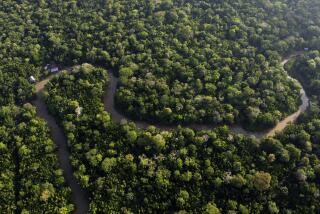It’s been a deadly season for environmental activists and land defenders in Brazil
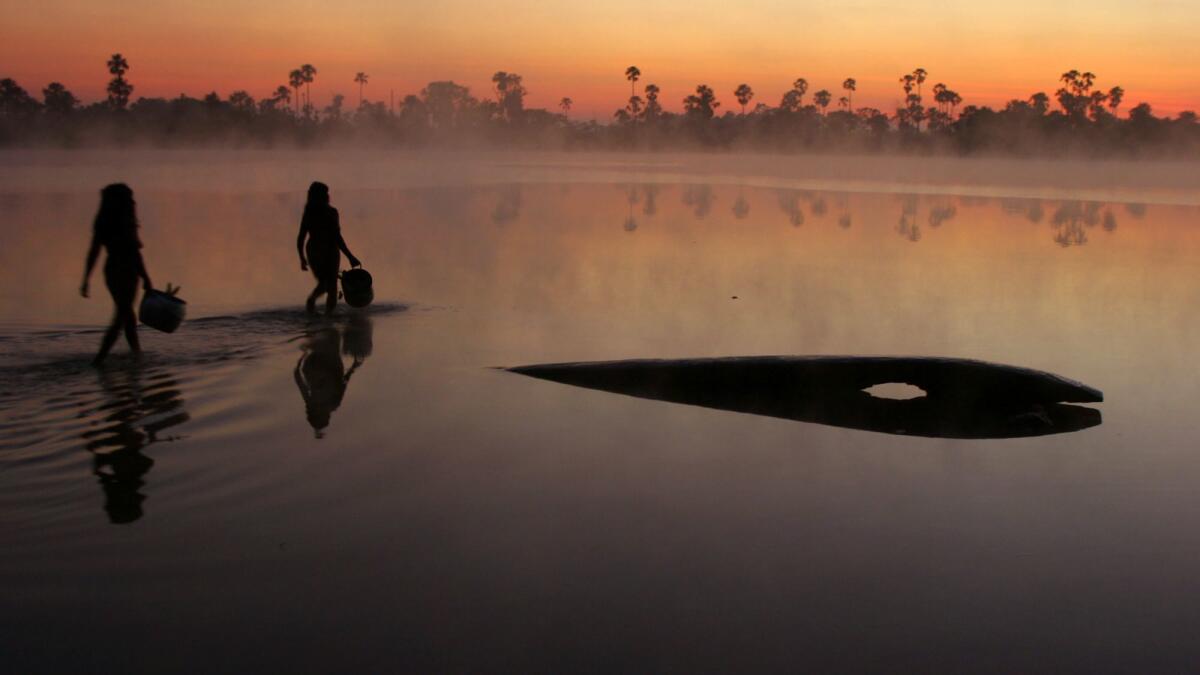
- Share via
Reporting from SAO PAULO, Brazil — When villagers refused to let a timber exporter log on their land in a remote Amazon rainforest area of Brazil’s Mato Grosso state, the hit men were sent in.
When police finally arrived 24 hours later, slowed by poor communication in the region, they said they found the bodies of nine men, all shot or stabbed to death, many bearing signs of torture.
The slaughter of Brazilian environmental activists and land defenders has been unrelenting for years, with new research from the watchdog group Global Witness showing that 57 people in the country were killed last year in confrontations with ranchers, loggers, miners and poachers.
That total marks a steep increase from the 39 killed in 2005, the year that the plight of Brazilian land defenders first caught the world’s attention with the fatal shooting of Dorothy Stang, an American nun who became an environmental activist and human rights defender in the Amazon. Stang was shot six times by a pair of gunmen. A rancher was ultimately convicted of ordering her death.
According to Global Witness, a nongovernmental organization that tracks the exploitation of indigenous people and their resources, 2017 was not only the most lethal year on record for environmental activists in Brazil, but one of the deadliest in any country. Global Witness said its tally in Brazil is probably an undercount because its methodology requires that it identify each victim by name, which can be a challenge because some potential victims live in highly isolated areas.
The peril for land defenders in Brazil is not expected to improve anytime soon, the group says.
“On paper, Brazil has many of the policies and institutions that could solve this problem and protect the rights and well-being of ordinary Brazilians, but this government is weakening those institutions in favor of facilitating big business,” said Ben Leather, senior campaigner for Global Witness.
In 2017, state agency FUNAI, which is responsible for protecting indigenous peoples’ rights in Brazil, had its budget slashed in half, forcing it to close several regional offices. INCRA, the state agency responsible for redistributing land to small-scale farmers and Afro-descendants who live on lands called quilombos, had its budget cut by 30%.
The Global Witness report also noted that the powerful agribusiness lobbying group known as the ruralistas initiated a special congressional commission investigation into irregularities in land demarcations as a way to damage the reputations of FUNAI and INCRA. The commission’s final report accused the two agencies of backing fraudulent land claims and requested that 67 people be indicted. No indictments were issued, however.
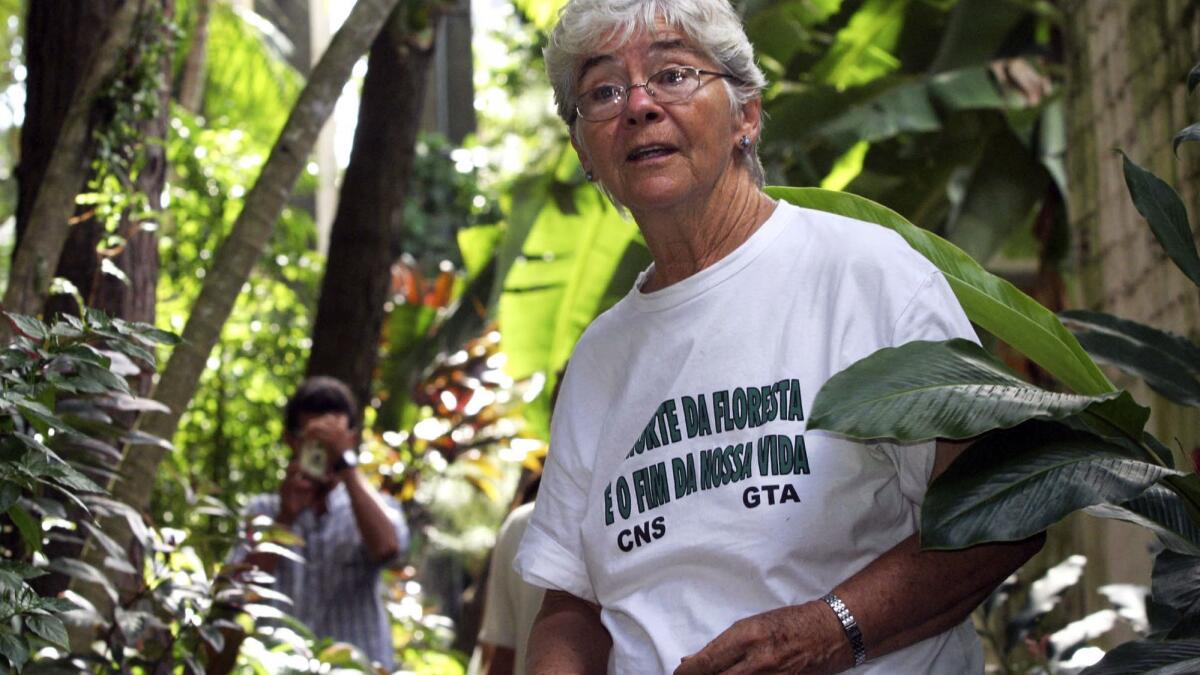
A spokesperson for Brazilian President Michel Temer dismissed the Global Witness report as “fake news” and accused the group of distorting the facts.
“The Global Witness report presents misleading, inflated, fragile data and a dubious methodology. Death attributed by police investigation to drug trafficking, for example, is said to be a result of agrarian conflict,” the president’s communication team said in a statement.
“Flawed and poorly researched reports are examples of fake news used to attack the government, whose essential commitment has been to defend the Brazilian people.”
More than half the members of Brazil’s Congress also belong to the ruralistas group, which also has close ties to Temer. The lobbying organization is known for vehemently opposing land demarcations that allocate property to indigenous peoples, Afro-descendants and small-scale farmers who already live on the land.
While the three groups make up the majority of the 57 activists killed in Brazil last year, Global Witness said it is the indigenous peoples who suffer the most when struggling to defend their land, much of it in the Amazon, where 80% of 2017’s killings occurred.
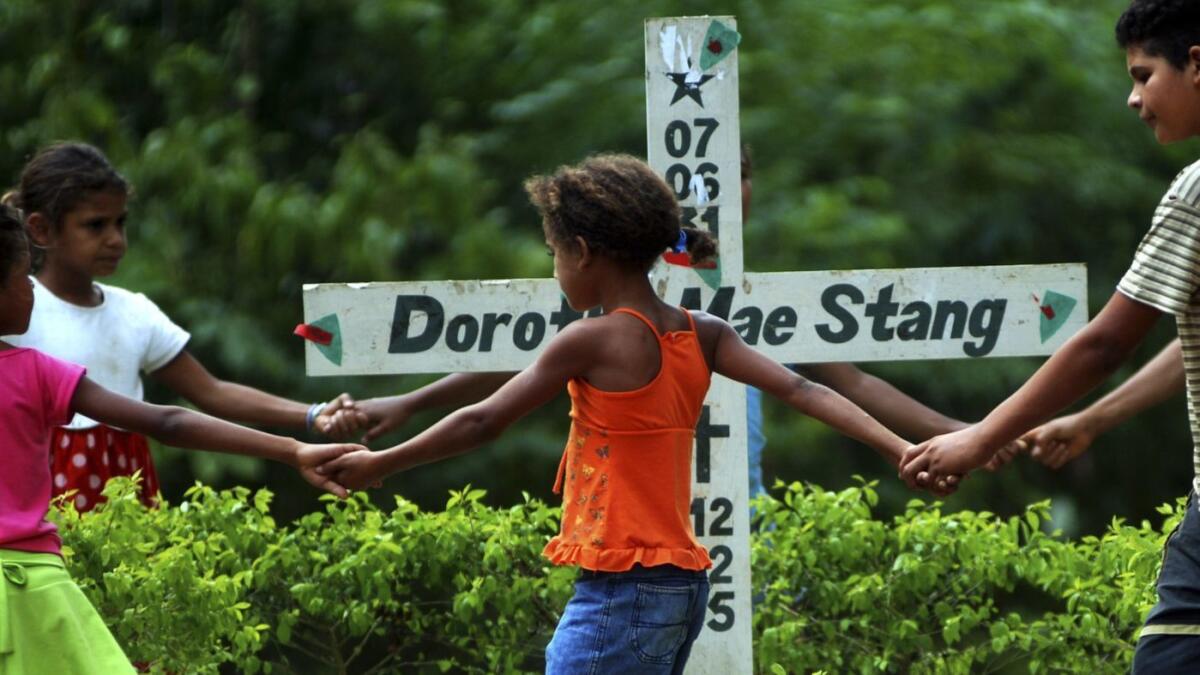
In one of the largest and most gruesome attacks last year, members of a group of Gamela indigenous people were attacked with machetes and rifles after occupying what they said was their traditional territory in Maranhao state in Brazil’s northeast. Ranchers were using the land, which was seized from the Gamela during Brazil’s military dictatorship, as a pasture for cattle.
The assailants attacked 400 Gamela families at night, firing numerous shots and even hacking off some people’s hands. Nobody was killed but 22 were severely injured. The survivors accused police officers of standing by while the violence took place, and indigenous rights activists released audio of what they claimed were the voices of military police promising not to interfere in the attack.
Global Witness said it has become so concerned with the deteriorating human rights of Brazil’s environmental activists and land defenders — it has recorded an average of 42 killings a year since 2012 — that it is planning to visit the country in early September to speak to local activists and, if possible, candidates in October’s presidential election.
“Brazil is one of the few countries on Earth that has a specific program for the protection of human rights defenders — all human rights defenders — including those working on land and environmental issues,” Leather said. “Again, on paper there was a commitment, but until that program is prioritized and until justice is guaranteed, there won’t be protection for the defenders and there won’t be consequences for those who wish to silence them.”
Langlois is a special correspondent.
More to Read
Sign up for Essential California
The most important California stories and recommendations in your inbox every morning.
You may occasionally receive promotional content from the Los Angeles Times.
